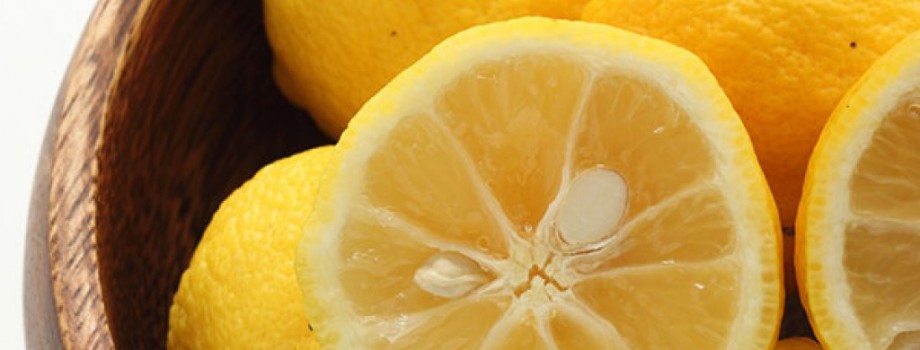Yuzu is a Japanese citrus fruit that is currently making waves in the culinary world. Back in 2013 it was deemed the “world’s new superfruit” by The Daily Mail, who predicted it would one day become as popular as oranges. While that premonition is yet to come true, it certainly is gaining popularity in the Western world.
Yuzu is valued for its highly aromatic rind, and because its juice is minimal and it is seldom grown outside of Japan, it is often quite expensive. It is slightly smaller than a tennis ball in size and tastes like a cross between lemon, mandarin, and grapefruit. Yuzu is an integral part of Japanese ponzu sauce as well as yuzu-kosho, a spicy, chili-salt laden paste, but its uses are becoming more and more varied as its popularity increases. At Kobe Jones, we even love using it in cocktails – like our Tokyo Slipper cocktail which features Midori, Yuzushu infused sake and pineapple juice shaken and strained over yuzu sorbet.
The history of yuzu
The yuzu has a history of over 1,200 years, with its origins in the Yangtze River region of China. Yuzu was introduced to Japan during the Nara Period (AD 710 – 794), and Japanese farmers began growing them with three purposes in mind – culinary, hot bathing, and medicinal.
In cooking, yuzu is generally used as a souring agent via its juice and zest as opposed to eaten on its own. A sour, tart, and very fragrant citrus, its zest is used mainly to accent cooked vegetables, hot pots, custards, and fish, while sometimes added to miso and vinegar or some Japanese teas to help them infuse. The juice from green yuzu is often mixed with soy sauce and other ingredients to make a powerful dipping sauce known as ponzu, and the flesh cut to add to homemade pickles.
Yuzu has now become a darling of chefs the world over. Chef James Martin offers a great recipe for homemade yuzu mayo to drizzle over sesame salmon, while Nigel Slater makes a delicious yuzu dressing for his crab and apple slaw.
In terms of hot bathing, tradition states that a hot yuzu bath is to be taken on the winter solstice day. A hot yuzu bath is believed to ward off winter colds and flu, and help in healing chapped skin. The hot water helps to release the pleasant aroma of the yuzu fruit, which in turn gives a relaxation effect and provides better circulation in the body. Some also believe that taking a yuzu bath brings you wealth and assurance of good health, and for this reason, many Japanese (and tourists for that matter) flock to areas such as the island of Shikoku, where fruit is continually tossed into hot springs from the abundant yuzu groves.
Yuzu in Australia
Yuzu is very difficult to grow in Australia, although some producers are succeeding. The Japanese have a saying that translates to “peaches and chestnuts 3 years, persimmons 8, but stubborn, stupid yuzu takes 13 years”.
Yuzu is quintessentially an autumn and winter fruit, however today it is found in many convenient forms. Bottled yuzu juice, vinegar, and paste is available in many Asian grocers, and yuzu powder (dehydrated and pulverised yuzu zest) and frozen fruit puree can be used to add flavour to desserts.
Australian chefs have a habit of using yuzu in a slightly different way to the Japanese, adding it to many dishes you would normally find simple citruses such as orange, lime, or lemon. The flower blossom notes provide extra complexity to these fruits, and as a result, yuzu juice can be an interesting substitution for orange blossom water, and will work well alongside cinnamon, cloves, pistachio, and rose.
How to cook with yuzu
Yuzu has a very strong flavour, and depending on your usage, very little may be needed to pack a punch. In drinks, a little goes a very long way, and just a drop to a cocktail is often enough. Think of yuzu as a bitter rather than a fruit juice.
When eating oysters, again, just one drop is enough to turn an ordinary oyster into something of citrus wonder. In marinades, mayonnaise, or brunoise, little is required again, however you can up the amount to two or three drops depending on the quantity and personal taste.
Yuzu also has infinite applications in sweet recipes, where it’s best used like an essence. Try adding a couple of drops to your custards, jellies, ices, and meringues and you won’t regret it.
Some other uses for yuzu include:
- Cocktails, mocktails, slushies, and celebratory drinks
- Asian-style soups
- Sushi rice
- Sashimi
- Ponzu sauce
- Sauces, salad dressings, and mayonnaise
- Curds, cakes, biscuits, and preserves
- Teas
- Sorbets
Yuzu Recipes
Want to get started cooking with yuzu but not sure how? Use some of these great recipes for inspiration.
- Luke Mangan’s seared scallops with tabbouleh and herb salad
- Broiled black peppered sake marinated salmon with zucchini spaghetti
- Drunken scallops with ponzu granita
- Trevally tartare mochi quail eggs and ginger
- Roast yuzu chicken with Asian slaw
- Pan-seared wild rockfish and soft shell crab tempura with ginger and yuzu glaze
- Nobu Matsuhisa’s new style sashimi
- White chocolate and and yuzu pavlova
- Mushroom salad with yuzu dressing
- Yuzu and ginger macarons
- Yuzu sorbet
- Yuzu meringue tart
- Japanese citrus and yuzu-cha
You could also try this very yummy recipe for sashimi style hokkaido scallops, which comes direct from our kitchen at Kobe Jones. Enjoy!






 (8 votes, average: 4.63 out of 5)
(8 votes, average: 4.63 out of 5)